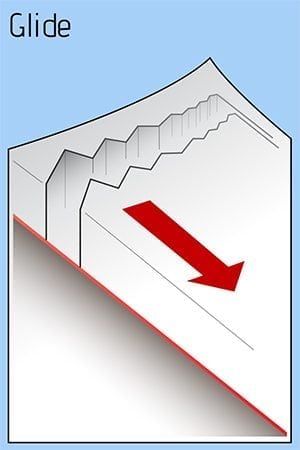Valdez
Above 4,000ftModerate
2,000 to 4,000ftModerate
Below 2,000ftLow
Degrees of Avalanche Danger
Avalanche Problems
Problem 1
Likelihood:
- Almost Certain
- Very Likely
- Likely
- Possible
- Unlikely
Size:
- Historic
- Very Large
- Large
- Small
Trend
- Increasing
- Steady
- Decreasing
Problem 2
Likelihood:
- Almost Certain
- Very Likely
- Likely
- Possible
- Unlikely
Size:
- Historic
- Very Large
- Large
- Small
Trend
- Increasing
- Steady
- Decreasing
Avalanche Activity
Since Feb 7 only 2 small skier triggered wind slab avalanches have been reported from the north side of Billy Mitchell – Feb 12. 2x SS-AS-D1 6″ crown that ‘propagated fairly wide.’
Please share your field observations including signs of stable snow HERE.
Weather
The most recent NWS rec Forecast can be found HERE:
321 PM AKST Thu Feb 14 2019
The Thompson Pass Mountain Forecast covers the mountains (above
1000 ft) surrounding Keystone Canyon through Thompson Pass to
Worthington Glacier.
Tonight Fri
Temp at 1000` -1- 6 F 12-19 F
Temp at 3000` -2- 7 F -1-14 F
Chance of precip 0% 0%
Precip amount
(above 1000 FT) 0.00 in 0.00 in
Snow amount
(above 1000 FT) 0 in 0 in
Snow level sea level sea level
Wind 3000` ridges NE 18-42 mph NE 12-36 mph
Additional Information
SNOWPACK BIG PICTURE: In the top 4′ of the snowpack there is a challenging combination of weak layers and new wind slabs in the Valdez region. Below the Jan 23rd buried surface hoar the snow has good strength and structure. The further interior, the problem layers are more widespread and snowpack is considerably shallower.
Recent snowpack history, from top to bottom:
Feb 7-14: Nearly 0″ new snow and building north winds (70mph NE gusts on Feb 14 at Thompson Pass.) Widespread surface hoar growth up to 6mm. In windy locations, and close to the pass, most of this surface hoar has been knocked down.
Feb 3-6: 0.7″ SWE and 8″ of snow from Valdez to Thompson Pass. 8″ of new snow was recorded at 5500′ on Catcher’s Mitt. Freezing level was sea level throughout this cycle.
Jan 30-Feb 1: Natural avalanche cycle on all aspects above 3000′, up to size D3. Most ran on buried surface hoar.
Jan 28-30: 2″ SWE in Valdez, moderate winds, freezing level 1000′.
Jan 23-25: Multiple days of warm and wet with periods of rain up to 2500′.
Jan 13-22: Mostly clear, cold, and dry with light to moderate north winds. Widespread Surface Hoar growth (up to 15mm) and Near Surface Faceting.
Jan 12-13: 3-10″ of new snow with little wind.
Jan 4-12: was VERY cold and dry: moderate winds and wind chill reaching -50F. Pockets of surface hoar and widespread near surface faceting.
Dec 30-Jan 3: The New Year’s Eve storm brought nearly 2.5″ of SWE to Valdez and almost another 1″ (SWE) on the 2-3rd of January. The rain line was 1200′ during the Jan 2-3 storm, forming a 1-3″ crust locking up all the snow beneath it. These storms accumulated over 3′ above 2000′ near Thompson Pass. Both of these storms had little wind.
Above 4000′ the snowpack averages well over 300cm deep and has good strength and structure (few lemons). Below 4000′, the snowpack is significantly shallower and has old problem layers that are bonding well (rounding) and currently dormant: facet-crust combos and BASEL facets (all the way to sea level).
If you get out riding, please send in an observation.
Do a rescue practice with your partners. Always carry a beacon, shovel, and probe, and KNOW HOW TO USE THEM.
Practice good risk management, which means only expose one person at a time to slopes 30 degrees and steeper, make group communication and unanimous decision making a priority, and choose your terrain wisely: eliminating unnecessary exposure and planning out your safe zones and escape routes.
Announcements
The current hazard rating is MODERATE above 2000′ because of the Jan 23rd buried weak layer AND new Wind Slabs. Knowing where the Persistent Weak Layer exists is extremely difficult; but we do know that this problem layer is MUCH MORE prevalent further north-interior. Triggering these avalanches is becoming less likely; but the consequence can be the same: deep crowns, wide releases, 2 story debris piles, and long runouts. More info is available by clicking FULL FORECAST below. (All three forecast regions have the same info.)
Please share your field observations HERE.


